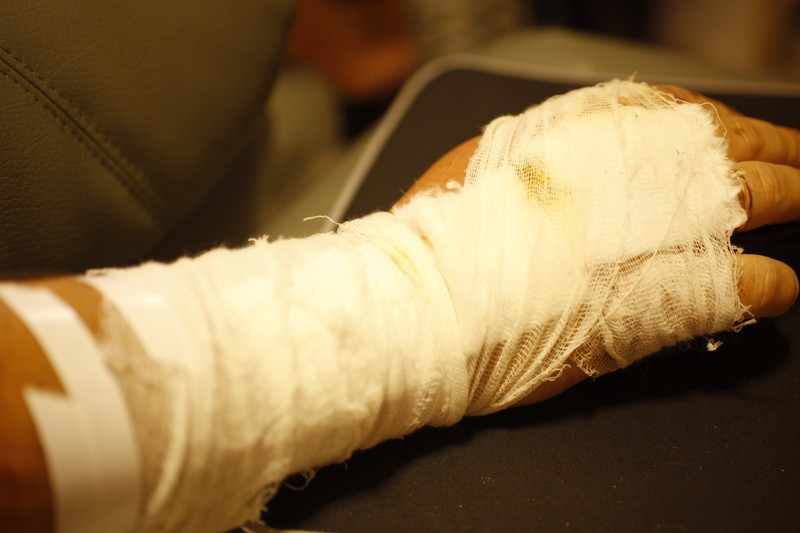Infection is an itchy, painful, annoying experience, and it could very well mean your death if it spreads. It's important to prevent infection, but how? To avoid an infection or worse, read on to learn how to apply the below tips:
Clean that sucker out, ASAP. You probably thought you did that well enough the first time around, but if you’re approaching 24 hours post-injury and have heat, swelling, pus, and pain, bingo: infection. Squeeze a jet of treated water into the wound until it’s clean.
Until you can get help, soak your boo-boo in water as hot as you can stand for 20 minutes, three times a day. Pat dry with something clean and cover with a dry, clean cloth. If you’ve got the chills or see red lines crawling from the wound toward your heart, well, it’s as bad as it looks. The infection is spreading and you need to get to the nearest hospital before your fever gets dangerous; they’ve got an IV bag of antibiotics waiting for you.
Of course, there are other ways of fighting infection once it sets in, but if you want the most effective way of allowing the body to do what it does best, keeping the wound area as clean as possible is your best bet. Make sure you do this with sterile water, i.e. water that has been filtered and preferably boiled.
Self-medicating with antibiotics is not generally advisable, as most patients who do so (especially preppers!) try to ration and keep from using more antibiotics than they think are necessary, leading to some bugs not being killed and becoming resistant to additional antibiotics.
However, if you start to see those red lines radiating out from your wound, either get to a hospital or start medicating; you're as close to Death's door as you think.
If you found this information helpful and would like to learn more, check out Backpacker.

2 to the head 1 to the chest. Don’t want them changing in a walker
Turn the head and lop it off if that gets infected again cut more off and so on. Tis but a flesh wound.
Russell Reeder